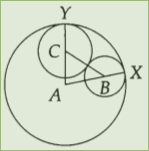My god.; this weekend was utterly wasted for the most part. I spent a good 8 hours in a training session on Saturday, then afterwards started a game of Civ5 as Poland on emperor difficulty.
My position started out pretty precarious, with two warmongering civilizations Songhai AND Mongols neighboring me. But luckily, it seems that they started going to war against each other with the Mongols capturing a city-state to the east of me, and the Songhai’s capital actually.
I got my first three cities running, then just started rolling over the Mongols once I researched and built crossbowmen. Not sure where the Khan’s troops were, but a combination of longswords men and crossbowmen really just steamed rolled the Mongols.
By that time, I obtained the technology for producing winged Hussars and cannons. This duo was literally impossible to stop by the AIs. I conquered the capital of Byzantine, then rolled over to the Shoshones. And then somehow everyone in the world decided to declare war on me.
And then I conquered all of them by the 1950s in-game-time.
I guess the most fun part of civ 5 is reaching late game; by then, the juggernaut becomes impossible to stop. The AI is so bad at naval combat that my battleships were shelling every city with no counterplay from them.

